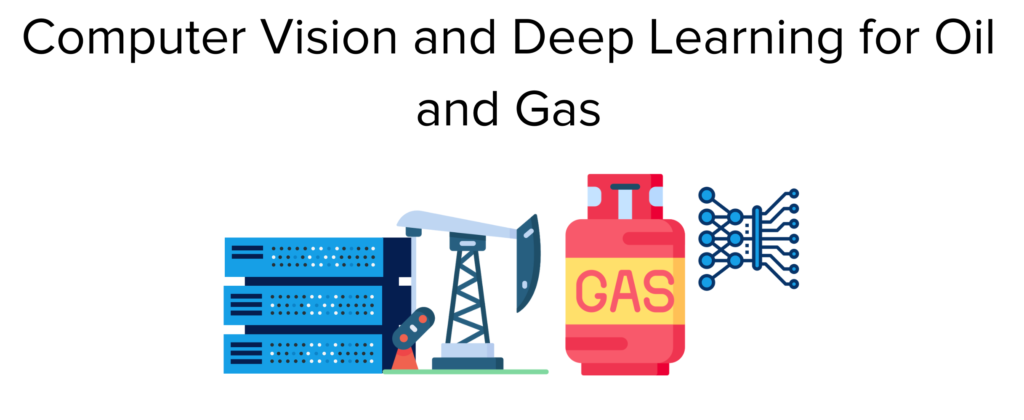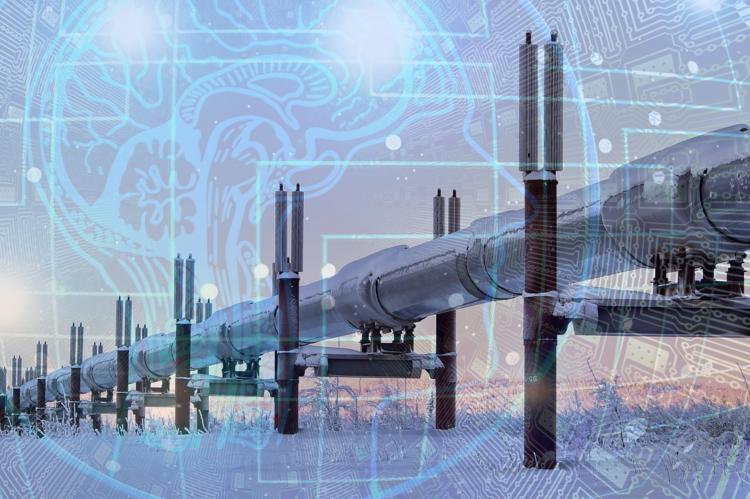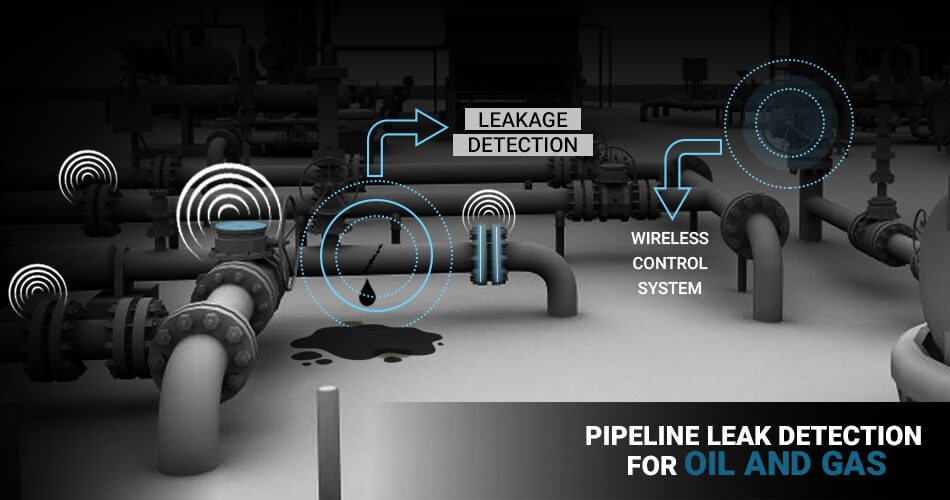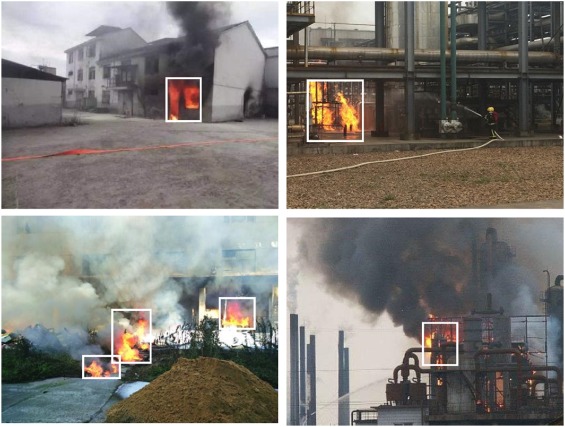
Computer Vision is a key technology of Artificial Intelligence (AI) that is rapidly entering the oil and gas industry, creating significant potential for innovation and growth. In many industries, AI has already triggered substantial changes and transformed the competition rules. Instead of relying on traditional, human-centered processes, companies aim to create value using AI technology. As AI is changing the rules of competition, organizations race to build up internal capabilities, create custom AI vision applications, and gather learnings with early adoption to iteratively optimize and operate AI technology at scale.
Technology Trends of AI in Oil and Gas
Emerging technology and breakthroughs in the field of computer vision and Edge AI allow the highly scalable use of distributed computer vision applications. Modern edge computing and deep learning move computer vision from the cloud to the network edge. The combination of the Internet of Things (IoT) with on-device machine learning allows processing the video streams of distributed cameras in real-time, at high computational efficiency. Those technological advances make it possible to build large-scale deep learning applications with a large number of connected endpoints. As a result, it becomes possible to build mission-critical, large-scale computer vision systems with remote cameras connected to computing devices. Compared to conventional IoT sensors and low-power devices, cameras provide a contactless method that provides rich information about complex objects and situations. With computers that can see, it becomes possible to automate human tasks and accelerate processes, increase operational efficiency and reduce human error or subjectivity.
Adoption of Computer Vision in Oil and Gas

Companies in oil and gas are generally adopting AI technologies with the main goal to improve operational efficiency through industrial automation (Industry 4.0). This typically translates to accelerating processes and reducing operational risks. The major application types include:
- Maintenance and service life prediction
- Safety and compliance monitoring
- Reliability, reduce business interruption
- Risk evaluation, structural health monitoring
- Sustainability and resource optimization
- Non-destructive testing and inspection
- Analyze fatigue and corrosion of systems
In the next section we will highlight some popular use cases of AI vision in more detail.
Oil or Gas Pipeline Inspection at Scale

Assessing large-scale infrastructure systems to determine their condition and health-stat under in-service or extreme hazard events poses great challenges to the operators. Deep learning approaches leverage computer vision models for the conditional assessment of large-scale systems through extracting critical information from the remote sensing data of cameras. Firstly, the visuals need to be pre-processed on pixel-level with traditional computer vision methods. Next, deep learning models (e.g., R-CNN, YOLO, …) are applied to evaluate the condition of different critical components. Application experiments demonstrated that DL models are able to rapidly and accurately detect the damage location and level. Hence there is a high potential for large-scale oil/gas pipeline assessment at both spatial and temporary scale over conventional models.
Remote Oil and Gas Field Monitoring
Real-time oil and gas field monitoring with cameras to automate and digitize oil development sites for maintenance of offshore oil and gas fields. Such systems aim to increase oil and gas productivity by monitoring and predicting the condition of load pumps with machine learning techniques. The digital transformation of the oil and gas industry is driven by low-cost sensors and high-performance computing with distributed systems to extract high-value information from big data, directly at the source of data (Edge Intelligence). The multi-dimensional value and comparably low costs of cameras allow large-scale video analysis without the need to attach physical sensors.
Automatic Recognition of Analog Instruments

Computer vision can be used to read analog gauges at power substations and other equipment. Cameras with computer vision are used to automatically read oil level gauges, winding temperature gauges, and SF6 gas density gauges. Thereby, vision algorithms use color segmentation to detect the position of the pointers and scale marks. Such applications work much faster and more accurately than humans and help to avoid dangerous accidents and expensive production interruptions.
Wireline Spooling Automation With Computer Vision
In the oil and gas industry, wirelines are used for well intervention and reservoir evaluation. While the toolstring is retrieved from the well, the wireline cable, typically under tension, is spooled on a drum. Improper spooling could cause severe cable damage. New computer vision applications have been implemented to detect spooling anomalies (Inception-V3 base network) and to predict the cable position in real-time (VGG-19 network).
Leak Detection With Computer Vision

Machine vision is used to detect methane gas emissions using regular infrared cameras. For example, a use case for deep learning based methane detection was recently developed. The automated approach simplifies the leak detection analysis with very high accuracy, as high as 95-99%. Traditional optical gas imaging (OGO) methods to detect methane leaks are labor-intensive and unable to provide leak detection results without the judgment of a human operator. Computer vision approaches for optical gas imaging with convolutional neural networks (CNN) require training with methane leak images to enable automatic detection.
Corrosion Detection With Deep Learning Models

Corrosion is a major defect in structural systems; it has a significant economic impact and can pose safety risks if left untended. Inspection tasks that must be performed periodically are often carried out manually, sometimes in hazardous conditions. In addition, the manual interpretation process is usually very expensive, time-consuming, and subjective. Therefore, deep learning methods analyze the video images of cameras to automate inspection tasks. A key indicator during inspections is the presence of corrosion. Hence, computer vision has been successfully applied in use cases for automatic rust detection. This leads to cost savings and faster, better decision-making of preventative or corrective measures based on quantitative insights at scale.
Geological Assessment and AI-aided Exploration
Computer vision tools are used for rock typing based on images of rock samples extracted from the wells. Therefore, deep neural networks (DNN) are applied. Traditional methods of petrophysical interpretation are time-consuming, and the results depend strongly on the human expert (subjectivity). In tests, the ML model’s accuracy is 92% compared to manual interpretation and about 1’000 times faster than the manual method. This shows how AI methods are the obvious way to accelerate the process and, even more critically, exclude subjectivity in the interpretation process.
Intelligent Fire Detection With AI Vision

Fire is one of the most severe accident causes that may lead to casualties, considerable production loss, and equipment damage. Traditional fire detection is done by human operators through video cameras, especially in petroleum and chemical facilities. However, it’s almost impossible for human operators to spot fires in time with hundreds of video cameras installed in large-scale settings. Human subjectivity, distraction, and visual perception limit the accuracy of human safety supervisors. Intelligent fire detection applies computer vision methods to the video of cameras to detect fires. The method uses background subtraction to detect motion and reduce computational complexity.
Conclusion
Today, we are only seeing the beginning of the era of AI-driven applications. Edge AI made it possible to move AI vision capabilities from the cloud to the field, enabling large-scale applications. Because of the strategic importance and distinct operational workflows, most oil and gas companies aim to build and operate their custom computer vision systems. New applications for computer vision in the oil and gas industry primarily aim to improve maintenance, safety, management, life-cycle sustainability, quality, and operational efficiency.
